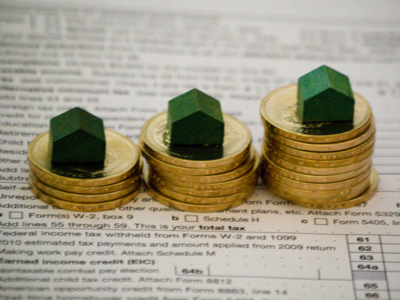
You wrote recently in your article, “Is My House an Investment?“, “An investment is something that pays you money. Therefore the house you and your family live in is not an investment.” I disagree.
I live in the San Francisco Bay area. Although my house does not give me money, it is now worth more than 32 times what I paid for it just under 50 years ago. It has also provided me a rent free place to live. Although the house does not pay me any money on an ongoing basis, I think it will represent a very good return on my money invested should I decide to sell.
– Palo Altoian
Of course your house is worth more in dollars today than it was 50 years ago in 1961. And you are fortunate enough to live in a location which has grown significantly more desirable over the past 50 years. The tech boom during the 1980s sent housing prices up in the San Francisco bay area more than possibly anywhere else in the country. But this alone does not mean that your house qualifies as an investment. Let’s run the numbers.
Let’s assume that every $1,000 you “invested” in your house is now worth $32,000. That’s a five fold doubling effect over 50 years (1-2-4-8-16-32). Had you been earning a 10% return on your investment, it would have doubled every seven years. At 10% your investment would have doubled seven times over 50 years and currently be worth $128,000 (1-2-4-8-16-32-64-128). That rule of thumb shows that whatever the appreciation on your home, it has not averaged the 10% market rate of return. And in fact if you run the numbers, you’ve gotten a 7.18% annualized return. That sounds pretty good, but let’s continue our analysis.
The average spot price of an ounce of gold in 1961 was $35.25. Today it is $1,725.20. That means that for every $1,000 you had invested in gold bullion, you would have $53,329 today instead of the $32,000 you have in your home. Gold has provided an 8.28% annualized return. This is at least partly because of double digit inflation during the 1970s and the unreported inflation more recently.
When adjusted for inflation, even using the official numbers, $1,000 in 1961 is worth $7,588.26 today. Inflation has averaged about 4.14% annualized. This reduces the return on your home from 7.18% to your home has received an after inflation annualized real return of 2.92%. This is still a good return for a home, which in any other location would have a real return of zero.
But now let’s look at what would be an investment. Let’s take a look at the S&P 500 total return over the past 50 years. These years include the 1970s, which were terrible, and the past ten years which were equally terrible. Two decades lost out of five.
Nevertheless, $1,000 invested in the S&P 500 total return in 1961 would have appreciated to $89,478 over the past 50 years. At that rate of return you could almost buy three of your current homes at today’s prices. The S&P 500, even over the past 50 years, has had an annualized return of 9.61%.
So while you are lucky to have a real return averaging 2.92% because of the increasing desirability of the area you live in, most homes just keeping up with inflation and require about 1% in maintenance costs to hold their value. The annual 1% costs of maintenance on your home are significant. Therefore the home you live in is not an investment. An investment is something that pays you money.
Photo by Megan Marotta